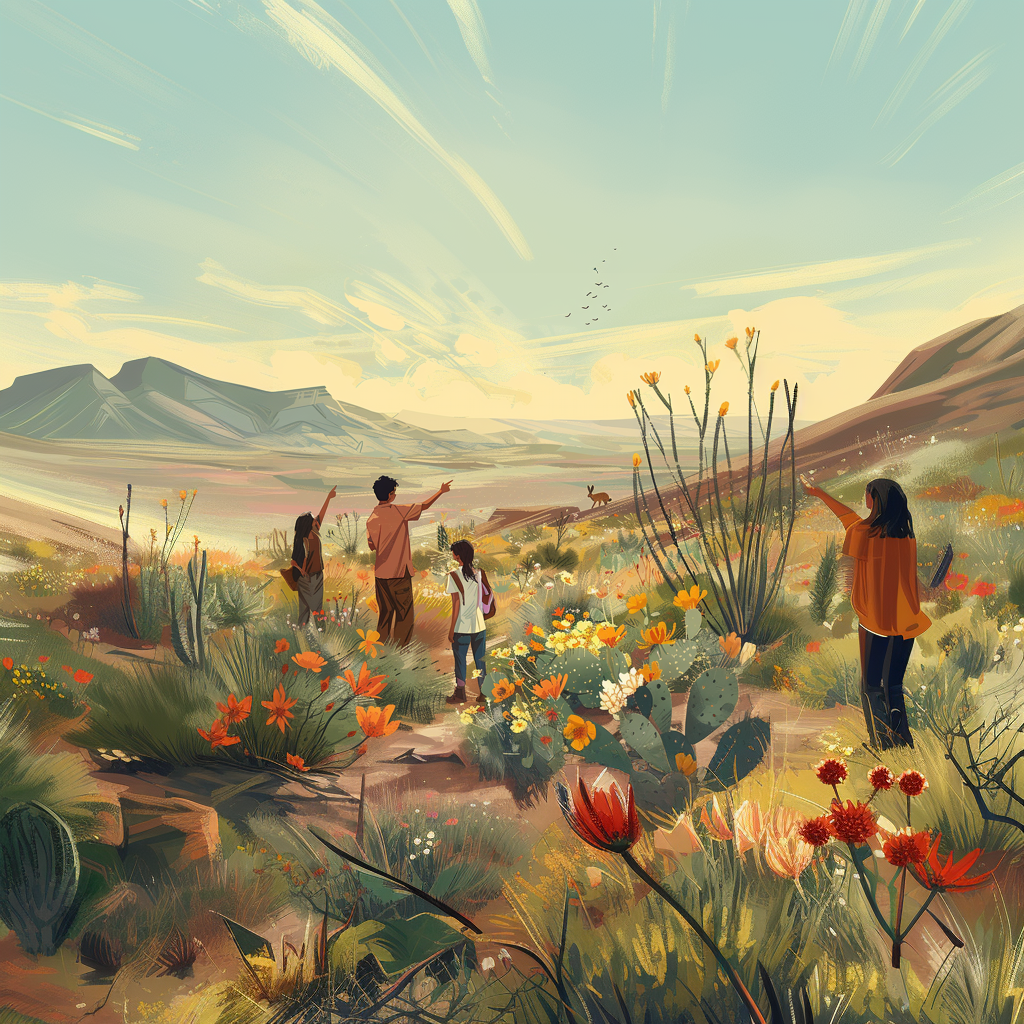
Springtime celebrate a promise of renewal and rebirth. Even in the Southwest we can celebrate Ostara, the vernal equinox. Yet, in the unique terrains of the Southwest, where the landscape whispers tales of resilience and beauty, celebrating Ostara invites us to weave old traditions with the vibrant threads of our local environment. This adaptation not only enriches our festivities but also deepens our connection to the world around us. Let’s explore how to honor Ostara in the Southwest, integrating the essence of spring with our distinct regional flair.
Ostara’s traditional symbols — eggs for fertility, rabbits for abundance, and flowers for growth. If you’re looking to add a creative touch to your celebrations, consider natural egg dyeing techniques that use plant-based dyes to create beautiful, eco-friendly decorations. — carry universal themes of renewal. Incorporating these with a Southwestern twist, such as decorating eggs with desert landscapes or including rabbit and coyote figures, bridges our celebrations with the local ecosystem.
For an inspired Southwest touch, consider creating an altar featuring native plants like the fiery red blooms of the ocotillo or the cheerful yellow of desert marigolds, alongside traditional Ostara symbols. This blend honors both the tradition and the unique springtime expression of the desert.
Incorporating Ostara’s themes of renewal and growth into modern life, especially in the Southwest, means adapting traditions to our surroundings. Initiatives like planting native species or decluttering our living spaces reflect the essence of Ostara while being mindful of sustainable living practices, a core value of the Cottage Core lifestyle.
For those with a green thumb or an interest in indoor gardening, From Little Sprouts to Lush Life: Microgreens offers a delightful way to embrace the spirit of growth and renewal, even in urban settings.
In more temperate climates, Ostara marks the emergence of early spring flowers such as daffodils, crocuses, and tulips. Traditional symbols include eggs, representing fertility and new beginnings, and rabbits, symbolizing abundance and growth. For those interested in exploring other seasonal celebrations, how to celebrate imbolc offers a wonderful guide to crafts and traditions that honor the early stirrings of spring. Foods typically associated with Ostara in these regions lean towards early spring crops: leafy greens like spinach and Swiss chard, dairy products as animals begin to produce milk again, and eggs, which become plentiful as days lengthen and chickens lay more.
Rituals might include planting seeds or seedlings to signify new growth and the start of the gardening season, spring cleaning to clear out the old and make way for the new, and walks in nature to appreciate the awakening earth.
The Southwest’s desert landscape presents a stark contrast to the lush greenery of more temperate regions. Here, Ostara celebrations adapt to reflect the local environment and its seasonal changes.
Flora: Instead of the early blooming bulbs of cooler climates, the Southwest sees the flowering of native plants such as the vibrant ocotillo, whose fiery red blooms are a symbol of the desert’s beauty and resilience. Another significant plant is the desert marigold, which blankets areas with its bright yellow flowers. Incorporating these plants into Ostara rituals and decorations creates a connection to the local landscape and honors the unique expression of spring in the desert.
Learn about the spring season in the desert and the native plants that thrive in the Southwest. Desert Museum Spring Seasons

The traditional foods of Ostara, emphasizing new growth and fertility, are reimagined with a Southwestern twist. Instead of the typical early spring vegetables, celebrations might feature dishes made with local ingredients like nopales (cactus pads), which can be harvested fresh in the spring, and mesquite flour, made from the pods of the mesquite tree, for baking. A traditional egg dish might be transformed with the addition of chilis, cilantro, and queso fresco, incorporating the vibrant flavors of the region.
Enhance your Ostara feast with a unique Southwest beverage, such as a ceremonial Spiced Cacao, blending traditional and local flavors for a magical brew that nourishes body and soul.

While eggs and rabbits are universal symbols of Ostara, celebrating in the Southwest might also include symbols that reflect the desert environment, such as representations of the coyote, which embodies adaptability and playfulness, or the quail, a symbol of community and protection. Rituals may include creating mandalas or altars with local stones and desert flowers, or performing cleansing rituals with sage, which is native to the area, to welcome the new season.

It is possible to adopt traditional Ostara egg hunts and picnics to the desert by choosing locations near blooming wildflowers or under the shade of mesquite trees. Community gardens focus on planting native plants and herbs that are adapted to the arid climate, such as agave and yucca, to celebrate the theme of growth and renewal.

Learning how to celebrate Ostara in the Southwest celebrates the season’s themes of renewal and growth while honoring the unique beauty of our local landscape. By integrating traditional symbols, foods, and rituals with a touch of Southwestern flair, we create a celebration that is both meaningful and reflective of our connection to nature.
For further inspiration on living in harmony with the seasons and the earth, explore our articles on Celebrating Yule in the Southwest: Tips and Ideas. Just as Ostara brings the promise of spring, Yule marks the return of light during the winter solstice. Understanding the nuances of celebrating yule in the southwest can deepen your appreciation for the cyclical nature of the seasons. and Finding Magic and Meaning in Cottage Core: It’s All About Connection.
Let this Ostara be a time of joy, growth, and new beginnings, as we welcome spring and all the beauty it brings to our Southwest home.